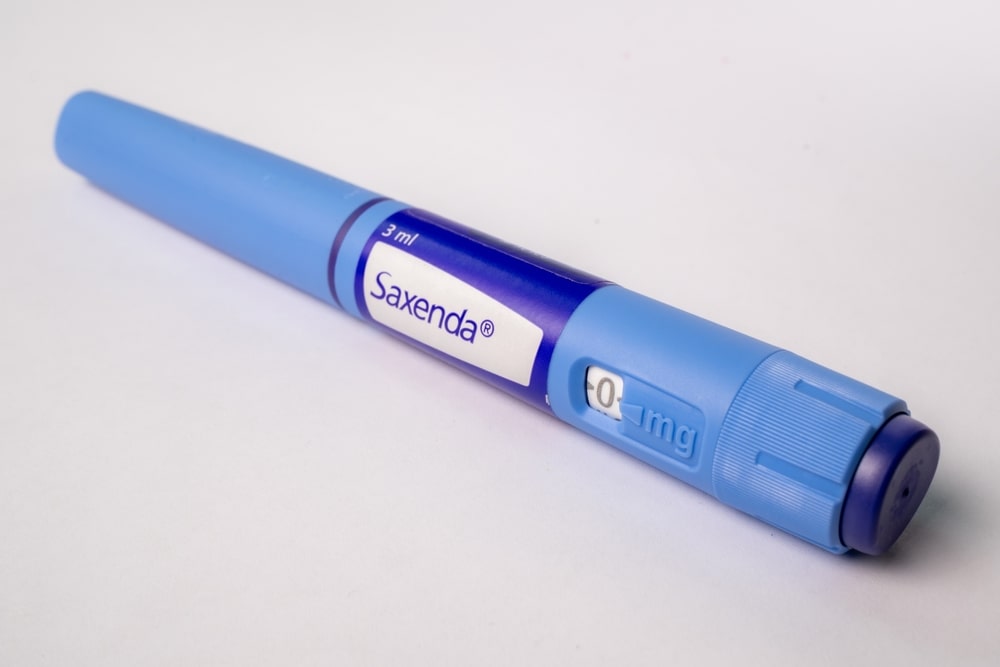Saxenda, an FDA-approved injectable medication, has become a prominent treatment for obesity and overweight conditions with associated health risks. Its active ingredient, liraglutide, is a glucagon-like peptide-1 (GLP-1) receptor agonist, designed to help manage weight effectively. If you’re considering Saxenda as part of your weight loss journey, knowing what to expect can help you prepare for the process and maximize the benefits. Let's delve into Saxenda Injections in Dubai.
How Does Saxenda Work?
Saxenda mimics the hormone GLP-1, which regulates appetite. Administered daily through a prefilled injection pen, it aids weight loss by:
- Reducing Hunger: It helps control cravings and suppresses appetite.
- Increasing Satiety: It slows the emptying of the stomach, keeping you full longer.
- Regulating Blood Sugar: It stabilizes glucose levels, reducing the likelihood of energy crashes and overeating.
This dual-action approach targets the physiological and behavioral aspects of weight loss.
Who Can Use Saxenda?
Saxenda is recommended for individuals with:
- Obesity: A body mass index (BMI) of 30 or higher.
- Overweight with Health Risks: A BMI of 27 or higher with weight-related issues like hypertension or type 2 diabetes.
It is typically part of a comprehensive weight management plan, including dietary modifications and increased physical activity.
Starting Saxenda: What to Expect
Initial Consultations
Before beginning Saxenda, a healthcare provider will evaluate your medical history, current health status, and weight loss goals. This ensures that Saxenda is safe and suitable for you.
Injection Technique
Saxenda is injected subcutaneously into areas like the abdomen, thigh, or upper arm. The injection process is quick and relatively painless, and the pen design makes it easy for self-administration.
What Results Can You Expect?
Short-Term Effects
Many users notice reduced hunger and fewer cravings within the first week. This immediate appetite suppression can kickstart weight loss efforts.
Long-Term Outcomes
Clinical studies indicate that Saxenda users experience significant weight loss over time:
- At 16 weeks: Most patients lose at least 4% of their body weight.
- At 1 year: Average weight loss ranges between 5-10% of initial body weight.
These results can vary based on individual factors such as adherence, diet, exercise, and metabolism.
Benefits of Saxenda for Obesity Management
Sustainable Weight Loss
Saxenda not only facilitates weight loss but also supports long-term maintenance when combined with lifestyle changes.
Improved Health Metrics
It can help reduce obesity-related health risks, such as:
- High blood pressure
- Elevated cholesterol levels
- Insulin resistance and prediabetes
Enhanced Quality of Life
Many users report better energy levels, improved mobility, and increased confidence as they progress in their weight loss journey.
Potential Side Effects
While Saxenda is generally well-tolerated, it can cause side effects, especially during the initial adjustment period.
Common Side Effects
- Nausea
- Vomiting
- Diarrhea or constipation
- Fatigue
These effects are usually temporary and diminish as your body acclimates to the medication.
Rare but Serious Risks
- Pancreatitis: Signs include severe abdominal pain and vomiting.
- Gallbladder Issues: Rapid weight loss can increase the risk of gallstones.
- Allergic Reactions: Though uncommon, they require immediate medical attention.
Discussing your medical history with a healthcare provider can help mitigate these risks.
Lifestyle Modifications to Maximize Results
Saxenda is most effective when combined with healthy lifestyle changes.
Dietary Adjustments
- Focus on nutrient-dense, low-calorie foods.
- Avoid processed and sugary items that may counteract weight loss efforts.
Regular Exercise
Incorporating at least 150 minutes of moderate physical activity per week boosts results and improves overall health.
Behavioral Changes
- Practice mindful eating to avoid overeating.
- Set realistic, achievable weight loss goals to stay motivated.
Monitoring Progress with Saxenda
Tracking your progress is essential to evaluate the effectiveness of Saxenda.
Regular Check-Ins
Schedule follow-up appointments with your healthcare provider to assess weight loss and adjust your treatment plan if necessary.
Tracking Tools
Use apps or journals to monitor:
- Weight changes
- Dietary habits
- Physical activity levels
These records provide insights into what’s working and where adjustments are needed.
Common Concerns About Saxenda
Is Weight Loss Permanent?
Weight loss achieved with Saxenda can be maintained, but it requires continued adherence to healthy habits. If Saxenda is discontinued, weight regain is possible without proper lifestyle changes.
Can You Use Saxenda Long-Term?
Saxenda is safe for long-term use under medical supervision. Regular evaluations ensure its ongoing suitability for your needs.
Does It Work for Everyone?
While Saxenda is effective for many, individual results may vary. Factors like metabolism, diet, exercise, and adherence significantly influence outcomes.
Tips for Success with Saxenda
To get the most out of Saxenda:
- Be Patient: Weight loss is gradual and steady.
- Stay Consistent: Administer injections daily and adhere to your prescribed dose.
- Communicate with Your Doctor: Report any side effects or concerns promptly.
- Focus on Holistic Health: Treat Saxenda as part of a broader weight management strategy, including diet, exercise, and mental well-being.
Conclusion
Saxenda offers an effective, medically-supported solution for obesity and weight management. By suppressing appetite, regulating metabolism, and promoting sustainable habits, it can help individuals achieve significant health improvements. Understanding what to expect from Saxenda, from initial side effects to long-term benefits, empowers users to embark on their weight loss journey with confidence. Always consult a healthcare provider to determine if Saxenda is the right choice for your specific health needs and goals.






Comments